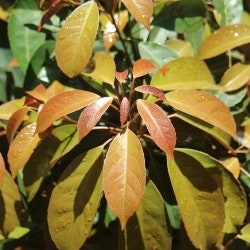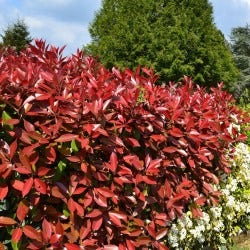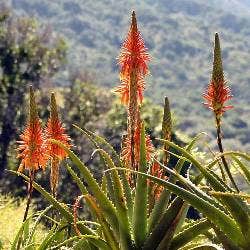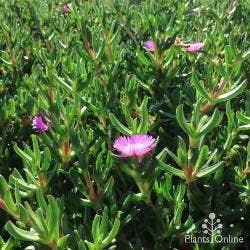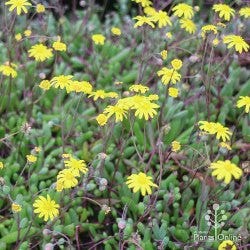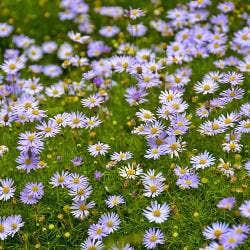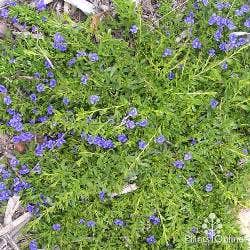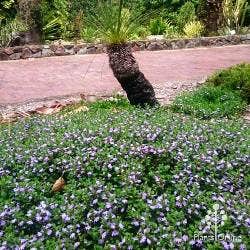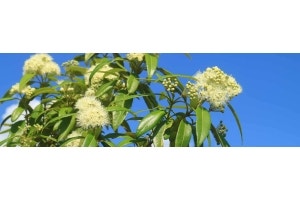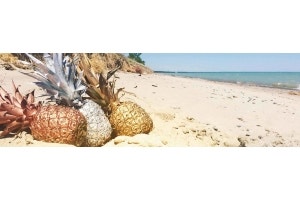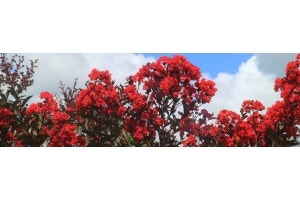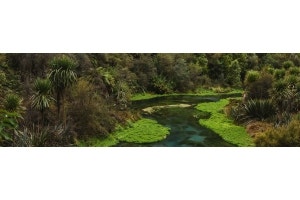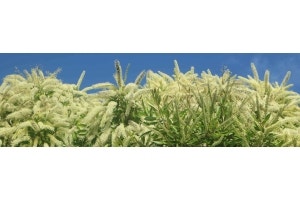
Bushfires are terrifying and unpredictable - and all organic material has the potential to burn in a bushfire. No amount of hedging will protect from intense fires like those in late 2019-early 2020.
But you can plan your garden to be more fire safe for regular blazes, through the plants you choose. Fire resistant and fire retardant plants can absorb some of the heat, trap embers and sparks, and reduce wind speed, slowing any fire down. They are also less likely to burn in the first place, and more likely to recover after burning.
Plants with thick, fleshy leaves, like succulents, and plants with large glossy leaves, have more moisture content and are less flammable than hard, thin, or needle-like leaves. Smooth bark produces less dry debris and litter than stringybark or paperbark.
Native trees with lots of oils are very flammable, so plant eucalypts, tea trees, and bottlebrush away from the house in fire-risk areas. Same goes for aromatic conifers and woody herbs like lavender and rosemary.
A tidy garden will be a safer garden. Prune dead branches, clear up debris, and sweep up fallen leaves.
Firewise Plants to Choose
Trees and Shrubs :
- Acacia - wattle
- Elaeocarpus eumundii
- Elaeocarpus Prima Donna
- Eremophila - emu bush
- Ficus
- Hymenosporum - native frangipani
- Magnolia
- Oleander
- Photinia
- Pittosporum
- Rhagodia - saltbush
- Strelitzia - bird of paradise
- Syzygium - lilly pilly
- Cupaniopsis - tuckeroo
- Viburnum
Succulents :
- Aloe
- Carpobrotus - pigface
- Crassula
- Echeveria
- Kalanchoe
- Haworthia
- Mesembryanthemum - ice plant
- Othonna - little pickles
- Sedum
- Senecio - chalk sticks
Ground Covers :
- Brachyscome - Swan river daisy
- Dampiera - kangaroo lobelia
- Dianella
- Dichondra - kidney weed
- Myoporum - boobialla
- Scaevola - fan flower
- Viola
Plants With Lignotubers
Some native plants have what is called a lignotuber - a woody swollen stem or trunk, part underground; and many have epicormic leaf buds - buds buried deep in thick bark. These plants may burn fiercely in a bushfire, but the lignotubers or epicormic buds allow the plant to regenerate after burning, sometimes without photosynthesis. Some plants also rely on the smoke from fire to germinate seed and allow growth of future generations. These include:
- Banksia
- Corymbia - flowering gum
- Eucalyptus
- Melaleuca - honey myrtle
If fires become frequent (more than every 10 years or so), woody plants growing from seed cannot reach mature size and set their own seed before the next fire. If fires become even more frequent (more than every 5 years or so), woody plants exhaust their lignotuber reserves, and grasses and annuals take over the land.




